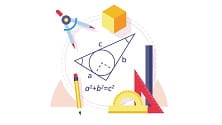Have you ever seen an erupting volcano? Well, you can now with this STEM science activity in which you are making your own volcano!
Article Contents
1. How do Volcanoes even form?2. What types of volcanoes exist?
2.1. Cinder Cone Volcanoes
2.2. Shield Volcanoes
2.3. Composite Volcanoes
3. Materials needed for building a volcano
4. Instructions for building a homemade volcano
5. What will you develop and learn?
How do Volcanoes even form?
The Earth’s crust is made of tectonic plates, huge chunks of rock that constantly shift. Volcanoes mostly occur in areas where those plates connect. As those plates continue to shift, that friction melts Earth’s core and magma forms.
Molten magma creates pressure and, with time, it finds a way to the Earth’s surface through the volcano. That is called eruption and magma becomes lava.
That eruption can be simulated by chemical reaction and we will show you how you can do it.
What types of volcanoes exist?
When we talk about volcanoes, we usually think about those big mountains sprawling big cloud of smoke and lava. But scientists differentiate 3 types of volcanoes:
Cinder Cone Volcanoes
Cinder Cone Volcanoes are the simplest type of volcano. They grow from a single vent in the Earth’s crust and are rarely taller than 300 meters. Lava that is gas charged is blown violently out of the volcano and the pieces that fall down around the vent eventually build circular cone, with a bowl-shaped crater at the top.
Shield Volcanoes
Shield volcanoes are large, broad volcanoes that look like shields from the air – that is how they got their name. The lava that pours out is thin, so it can travel for great distances down the shallow slopes of the volcano. They build up slowly over time, with hundreds of eruptions which creates many layers.
Time after time, lava pours out of the vent, slides down the slopes of the volcano, and builds up the size. They rarely explode catastrophically. The best-known shield volcanoes are the ones that make up the Hawaiian Islands, especially Mauna Loa and Mauna Kea that have been created from thousands of lava flows.
Shield Volcanoes typically grow 5-10 km across and about 500 meters high. The largest shield volcano in the Solar System is Olympus Mons on Mars and measures 27 km above the surface of Mars and spreads for 550 km in length.
Composite Volcanoes
Composite volcanoes are formed over hundreds of thousands of years through multiple eruptions. They are also called stratovolcanoes and they make up some of the world’s most famous (and most dangerous) mountains: Mount Fuji, Mount Rainier, and Mount Cotopaxi are just some of the examples.
Composite volcanoes are connected by a conduit system which taps into a reservoir of magma deep within the Earth. That magma can erupt from several vents across the composite volcano, or from a large central crater at the summit of the volcano.
They can grow thousands of meters tall and they were the cause of some of the most devastating eruptions in history like Mount St. Helens that left hundreds of people homeless.
Materials needed for building a volcano
If you want to see a video on how to make a homemade Volcano, there is one at the beginning of the article. Or continue reading and see the instructions below.

We recommend that you do this activity outside. You can use dirt or sand for making a great volcano and avoid making a mess at home. You can easily make it indoors if you choose so, but make it on some easily cleanable surface.
- Dirt or Playdough
- Little plastic bottle
- Baking soda
- Vinegar
- Dishwashing liquid
- Bonus: Food coloring
Instructions for building a homemade volcano
- Cut the bottle with scissors or knife and take just the bottom part which we will use in the rest of the experiment.
- Shape playdough or dirt around that bottle so it resembles a volcano. Here you can find out how to make a homemade playdough.
- Put a few spoons of baking soda into the bottle/volcano.
- Put a few drops of dishwashing liquid.
- If you want, you can put a few drops of food coloring.
- Finally, pour quickly some vinegar and enjoy the eruption!
What will you develop and learn?
- What is a volcano and how does it work
- Chemical reactions
- Fine and gross motor skills
- Creativity
- That science is fun!
If you’re looking for more fun science experiments we recommend you check out How to make a Lava Lamp for another amazing effect, and How to make Homemade Rocket so you can use those vinegar and baking soda leftovers from making the volcano.
If you’re searching for some great STEM Activities for Kids and Child development tips, you’re in the right place! Check the Categories below to find the right activity for you.

STEM Science
Videos, guides and explanations about STEM Science in a step-by-step way with materials you probably already have at your home. Find new Science ideas.
Read more
STEM Technology
Videos, guides and explanations about STEM Technology in a step-by-step way with materials you probably already have at your home. Find new Technology ideas.
Read more
STEM Engineering
Videos, guides and explanations about STEM Engineering in a step-by-step way with materials you probably already have at your home. New Engineering ideas!
Read more
STEM Math
Videos, guides and explanations about STEM Math in a step-by-step way with materials you probably already have at your home. Find new Mathematics ideas.
Read more
Psychology
Find out all about development psychology topics that you always wanted to know. Here are articles from child psychology and development psychology overall.
Read more
First year of Child’s Life
Following a Child’s development every month from its birth. Personal experiences and tips on how to cope with challenges that you will face in parenting.
Read more


One thought on “How to make a Homemade Volcano – STEM Science for Kids”